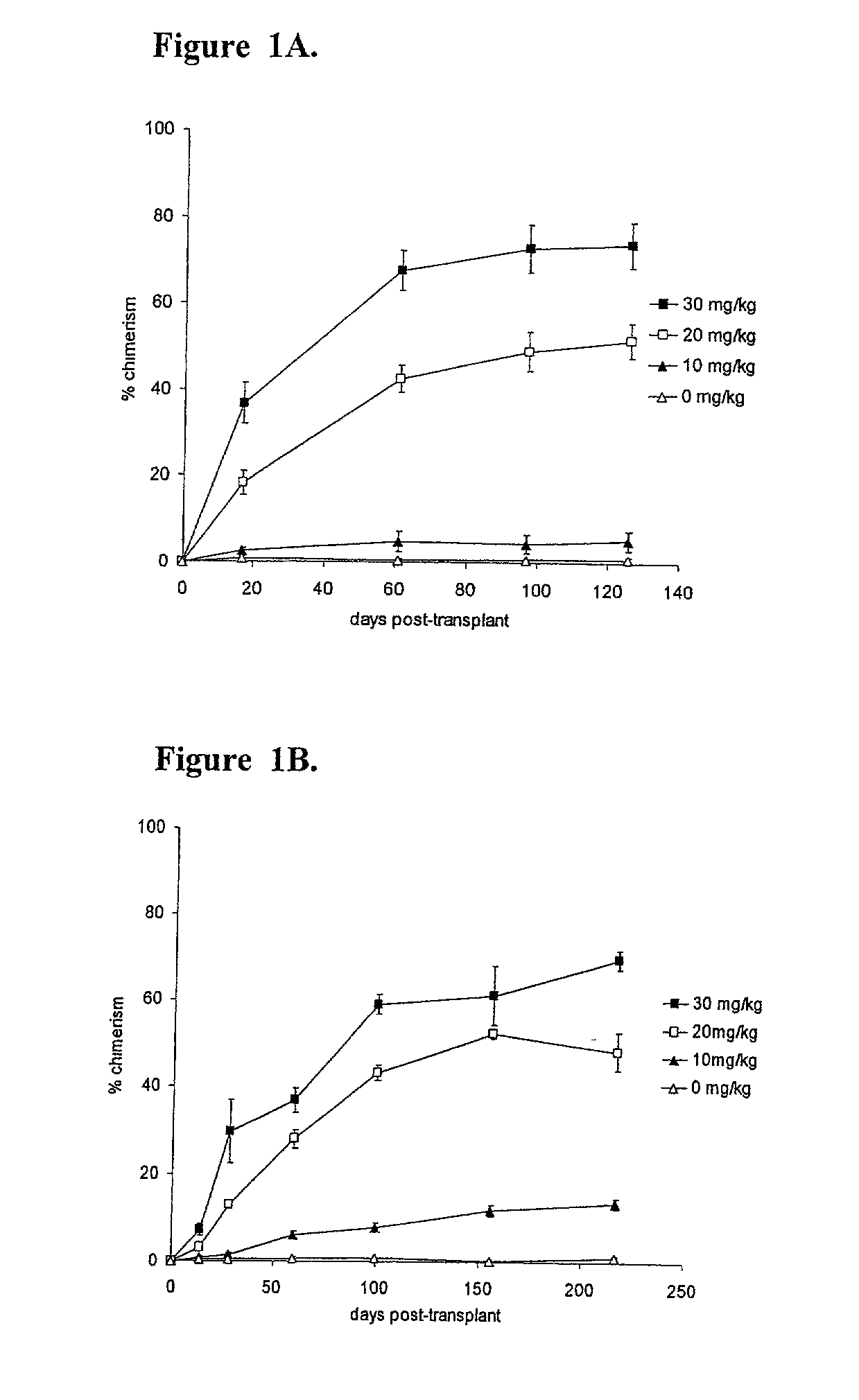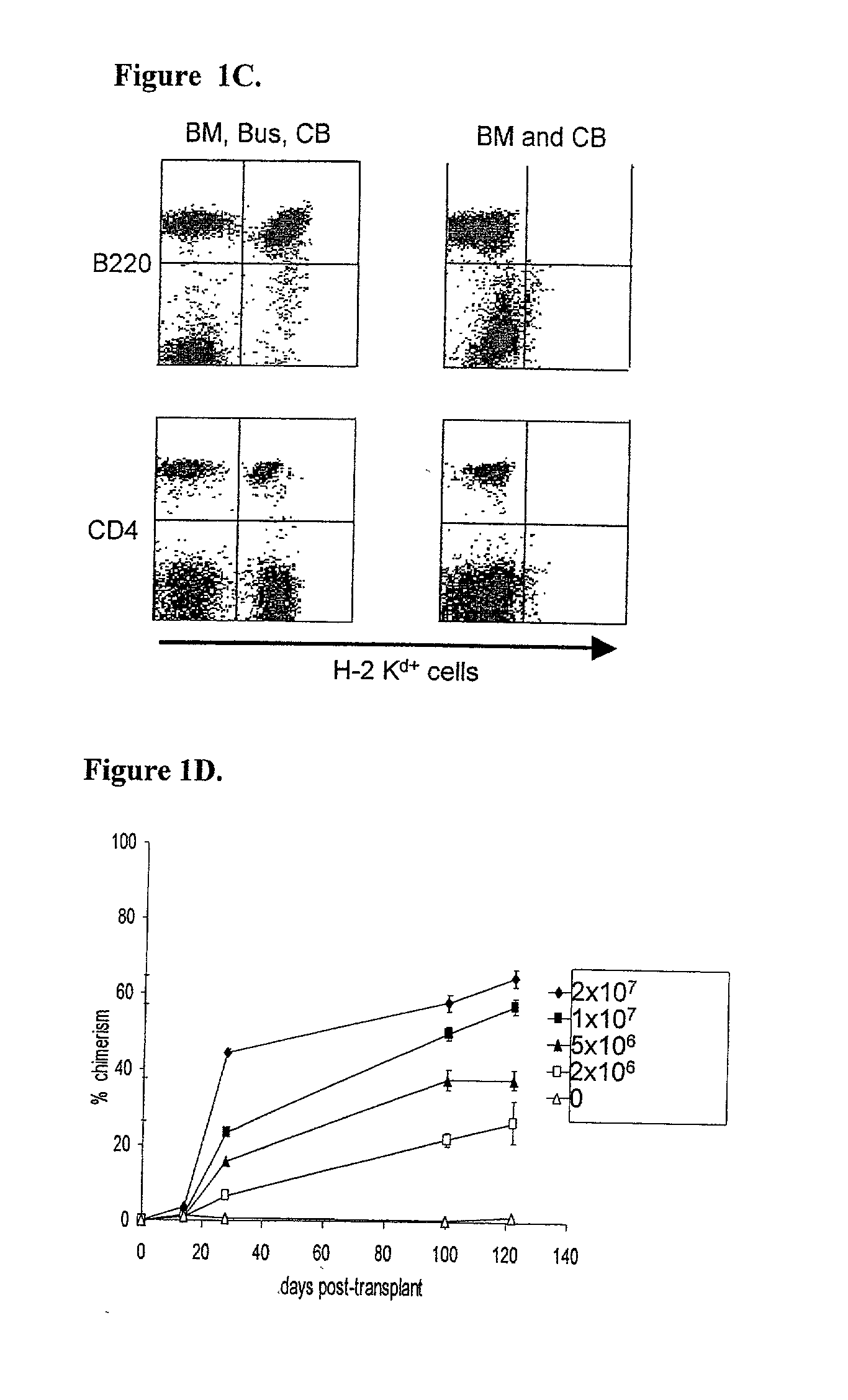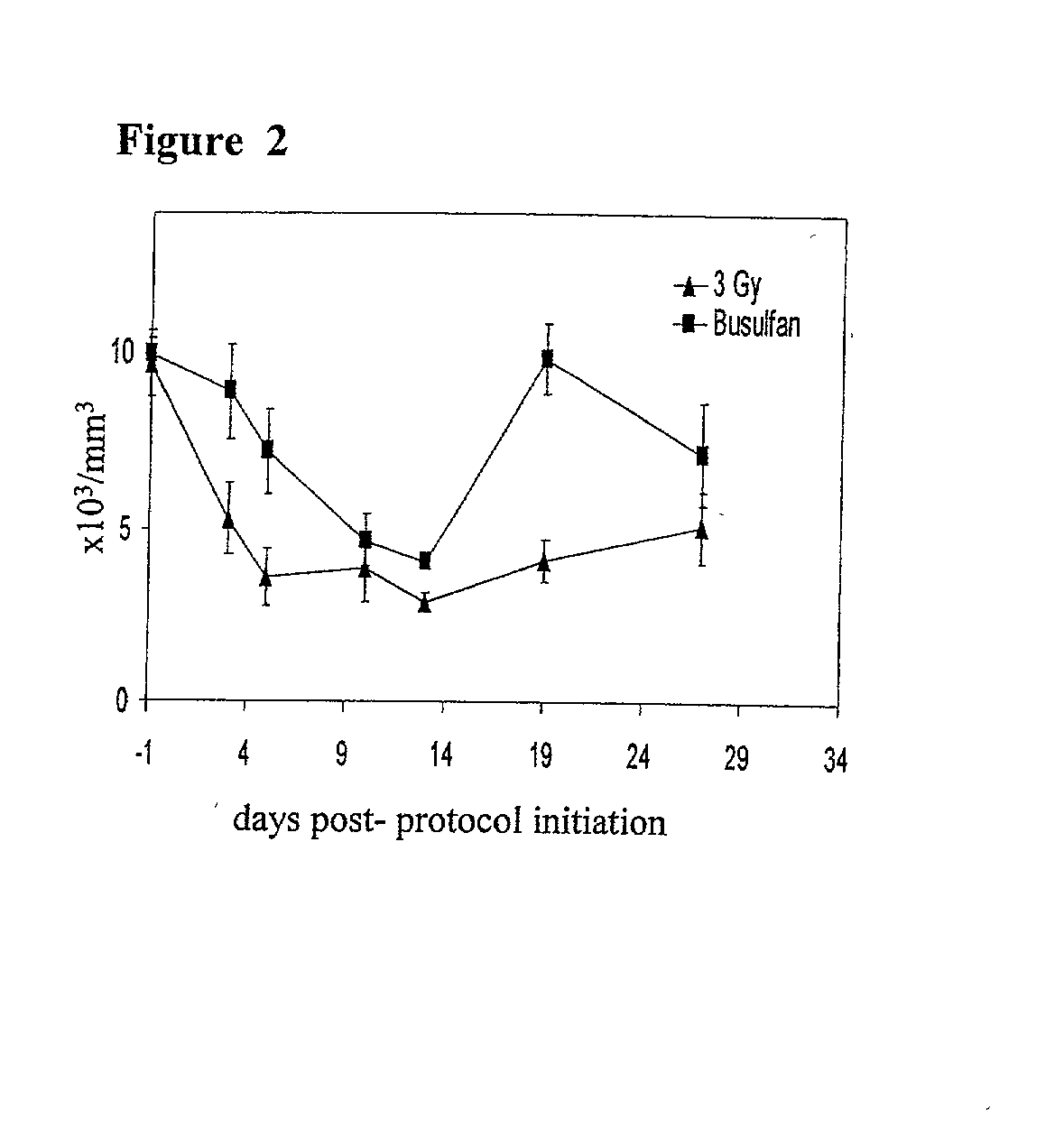Methods of inducing organ transplant tolerance and correcting hemoglobinopathies
a technology of hemoglobinopathies and organ transplants, applied in the field of inducing organ transplant tolerance and correcting hemoglobinopathies, can solve the problems of limiting the clinical application of these approaches for the correction of hematologic diseases or the induction of solid organ transplant toleran
- Summary
- Abstract
- Description
- Claims
- Application Information
AI Technical Summary
Benefits of technology
Problems solved by technology
Method used
Image
Examples
example 1
[0183] Blockade of Costimulatory Pathways and Administration of Busulfan Permits Titratable Mixed Chimerism Without Myelosuppression.
[0184] This example demonstrates that administration of busulfan to a subject permits titratable mixed chimerism without myelosuppression.
[0185] C57BL / 6 (B6) recipient mice (H.sub.2b, CD45.2) were administered a single busulfan dose (0 mg / kg, 10 mg / kg, 20 mg / kg, or 30 mg / kg, i.p.; below the LD50 dose of 136 mg / kg, with marrow rescue (Yeager et al., supra.)) one day before intravenous infusion of 2.times.10.sup.7 B6.5JL (H-2.sup.b, CD45.1) T cell-depleted bone marrow cells. Levels of donor hematopoietic chimerism, measured by peripheral blood cell flow cytometry, as described above, were directly proportional to the administered busulfan dose (FIG. 1A). Similar results were achieved when the busulfan was administered six or twelve hours before the administration of the T cell-depleted bone marrow cells.
[0186] The ability of a similar "micro-conditioning...
example 2
[0194] Costimulation Blockade / Busulfan Regimen Corrects Hemoglobinopathies.
[0195] This example demonstrates the effects of the micro-conditioning, costimulation blockade chimerism induction protocol in experimental hemoglobinopathy models.
[0196] The degree to which the chimerism induction protocol could promote replacement of the red cell compartment in the Hbb.sup.th2 murine model of .beta.-thalassemia was assessed (Shehee et al. Proc. Natl. Acad. Sci. USA, 90:3177-3181 (1993)). This .beta.-thalassemia model, created by insertional disruption of the mouse adult .beta.-major globin gene, results in perinatal death of homozygotes, whereas heterozygotes survive but display a phenotype similar to human .beta.-thalassemia intermedia, characterized by shortened red blood cell survival, anemia, and reticulocytosis.
[0197] .beta.-thalassemic heterozygote recipients (H-2.sup.b) were treated with a tolerizing dose (2.times.10.sup.7 cells) of Balb / c T cell-depleted bone marrow (day 0), costimu...
example 3
[0200] Costimulation Blockade / Busulfan Protocol Promotes Organ Tissue Transplant Tolerance.
[0201] This example demonstrates the effects of the micro-conditioning, costimulation blockade chimerism induction protocol in solid organ tissue transplants. To test whether the protocol of "micro-conditioning" and costimulation blockade could induce tolerance to solid organ allografts placed at the outset of the protocol, an immunologically rigorous (Balb / c to B6) skin graft model was employed.
[0202] B6 mice received 2.times.10.sup.7 Balb / c T cell-depleted bone marrow cells, costimulation blockade, and busulfan (20 mg / kg), as described above. In addition, animals received a day 0 Balb / c skin graft.
[0203] Control groups (no treatment, open diamonds, n=3; T cell-depleted bone marrow and busulfan, open triangles, n=3; or costimulation blockade and busulfan; open squares, n=3) all promptly rejected Balb / c allografts (FIG. 4A). Recipients receiving T cell-depleted bone marrow and costimulation bl...
PUM
| Property | Measurement | Unit |
|---|---|---|
| median survival time | aaaaa | aaaaa |
| time | aaaaa | aaaaa |
| concentration | aaaaa | aaaaa |
Abstract
Description
Claims
Application Information
 Login to View More
Login to View More - R&D
- Intellectual Property
- Life Sciences
- Materials
- Tech Scout
- Unparalleled Data Quality
- Higher Quality Content
- 60% Fewer Hallucinations
Browse by: Latest US Patents, China's latest patents, Technical Efficacy Thesaurus, Application Domain, Technology Topic, Popular Technical Reports.
© 2025 PatSnap. All rights reserved.Legal|Privacy policy|Modern Slavery Act Transparency Statement|Sitemap|About US| Contact US: help@patsnap.com



